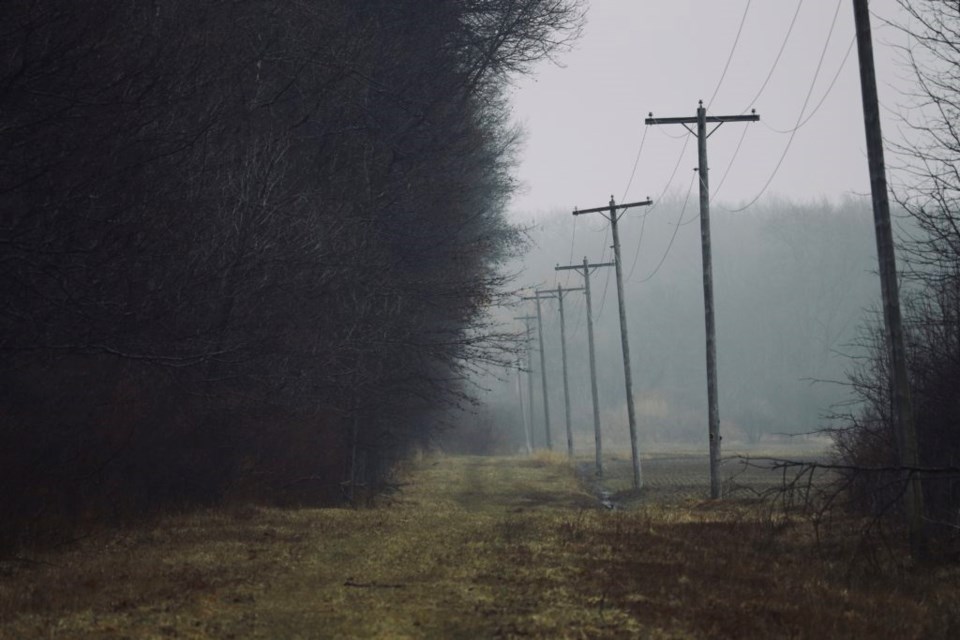
Ash trees have led to ecological, residential, and even political conversations in Niagara.
I’ve gotten good at identifying them by bark, even in the winter months. It’s especially easy to spot a dead ash with so many of them hidden in plain sight. They are often standing around the maples and oaks. Their bark looks mottled and peels off with ease, sometimes in big sheets.
In the summer, it’s harder to see their bare canopy and their destroyed innards.
Halloween is over, but let’s just say they stand as the dead among the living. Sounds creepy.
Our four native ash tree species in Niagara are hanging by a thread, as the invasive emerald ash borer has been targeting and cutting off the circulation of these trees. It does so by laying its eggs inside the bark. The eggs change into larvae, grubs which eat their way through the living wood. In doing so, with thousands of friends, they become fiends to ash trees.
Considering that the mortality rate for infested ash trees is nearly 100 per cent, there are massive implications for forest ecosystems when the ash trees start to drop, causing a loss of biomass in the forest.
Biomass is the amount of wood, or living material, a species represents in the forest, relative to other tree species. So imagine having a forest where half of the biomass is ash trees. There’s a considerable loss to the area’s structure and integrity when they die.
In comparison, it would be like removing half of the buildings on Queen Street, and the community finding ways to fill those voids again, which is exactly what the forest community wants to do, as well.
Ecosystems have a remarkable, slow motion skill to properly repopulate disturbed areas. More pollinator-friendly species will take hold in the newfound sunlight. Nearby, red maples will blow their helicopter-pod seeds into an exposed patch of soil. Meanwhile, a salamander sleeps under the log that fell last year, and the coyote stays sheltered in the heap of bony tree branches. There is still biodiversity to be considered in a landscape like NOTL, even if the forest is full of dead trees. That’s because any habitat is better than none, considering our town’s severe lack of forest coverage.
If a solid amount of the forest’s trees are dead, and the deceased happen to be ash trees, that doesn’t give immediate permission to write the area off as insignificant. To an animal living in the forest, it would be like having the roof blown off of its house, but he’s still able to make do, living in the basement. The basement, in this case, is the understory of grasses, young trees, and a labyrinth of logs from the fallen.
NOTL has seen ash trees, and woodlots containing high numbers of them, removed over the past few years. Around Virgil, Queenston, and the outskirts of downtown, we have seen woodlot loss in the name of filling in our development boundary quota. Forests which didn’t score high enough on paper were dismissed as lacking in value. In all of these cases, many of these forests contained large numbers of dead ash trees. Essentially, we ended up removing the habitat corridors through which animals move unabated, and the hollow trees which provide for owls, raccoons, and rare bat species alike.
These wooden beams of complexity lie scattered across the forest floor when ash trees tip to their fate. In ecosystems where ash trees are numerous and dense, you can tell when a heavy-duty wind storm has passed through recently. We’re talking the kind NOTL receives only once or twice a year. Taking a hike near a local woodlot of the Niagara Escarpment shortly after the weather event will reveal several giants, freshly cracked and toppled over in the same direction. All lying there, like match sticks who struck a deal with the wrong insect. Upon investigation, 90 per cent of the trees are ash species.
To come full circle, even in the dead of winter, you can pick out some ash trees in most Niagara forests, considering that many will be snapped in half, blown over, or seemingly flattened to the earth. If you also make a closer investigation, you’ll see the squiggly, uncannily beautiful tracks of the grubs, who ate their way through the wood and caused this scene before you.
I hope to see a greater respect for our ash forests in the New Year, and give them time to recover and heal. They’ll figure it out.